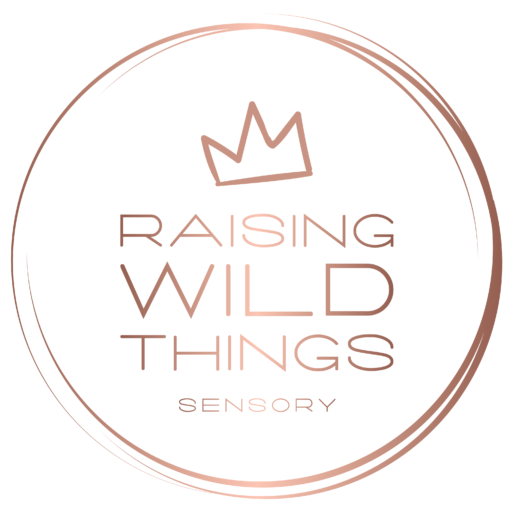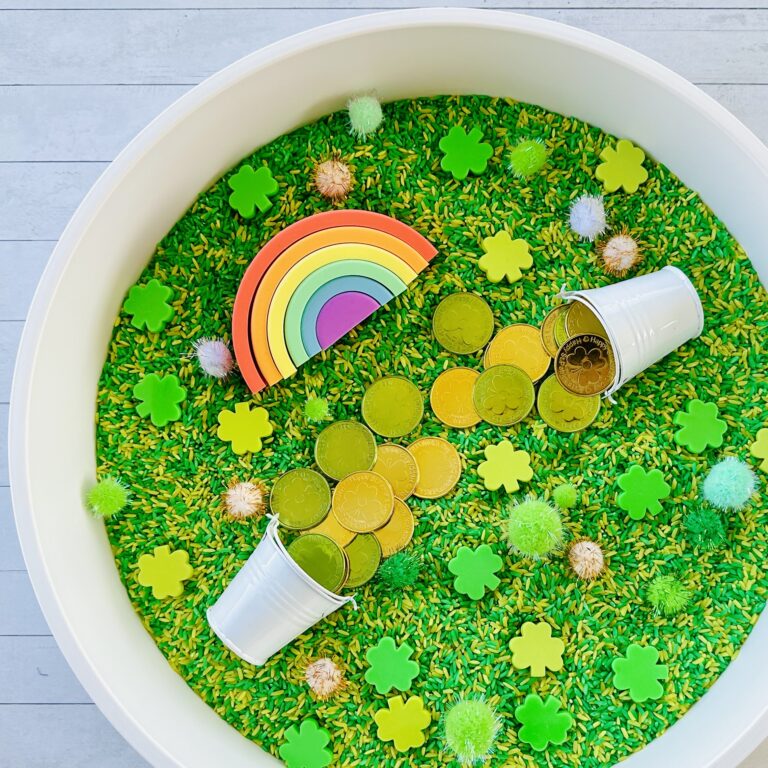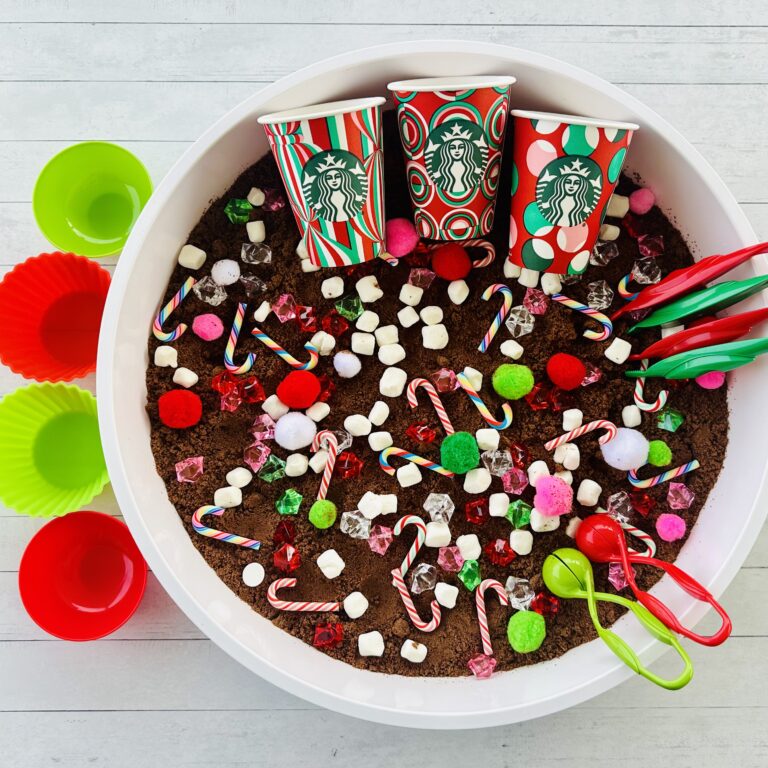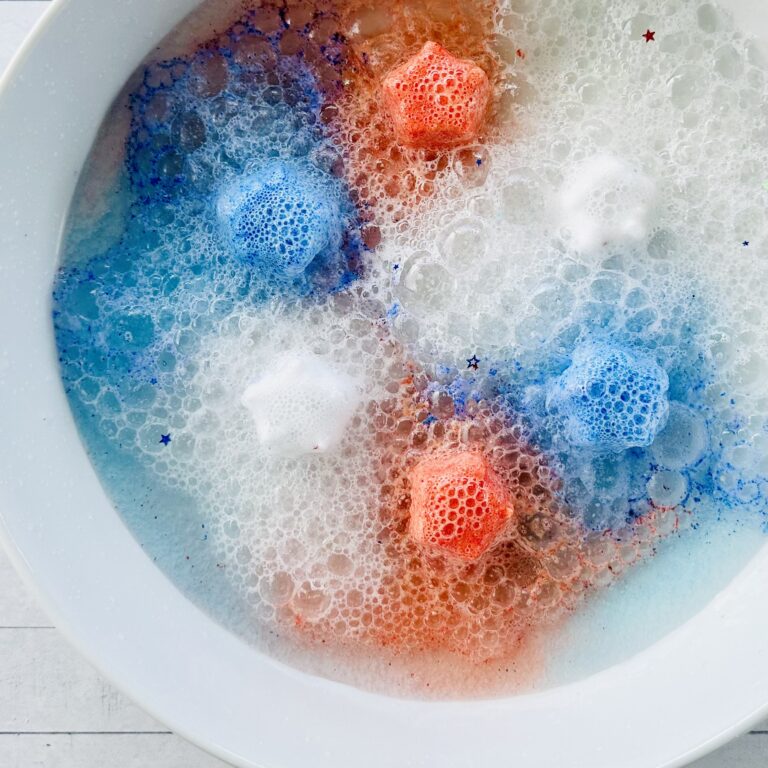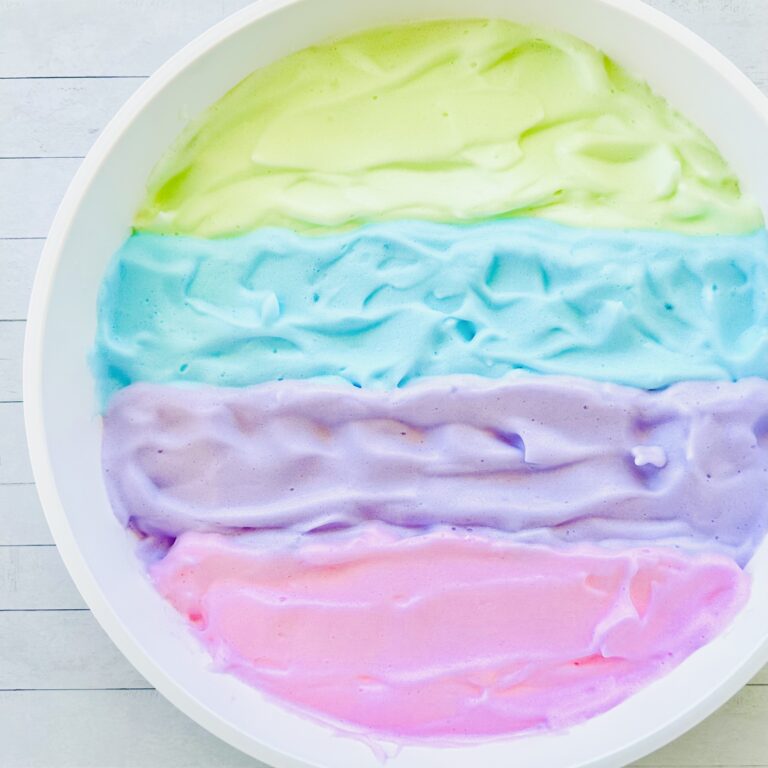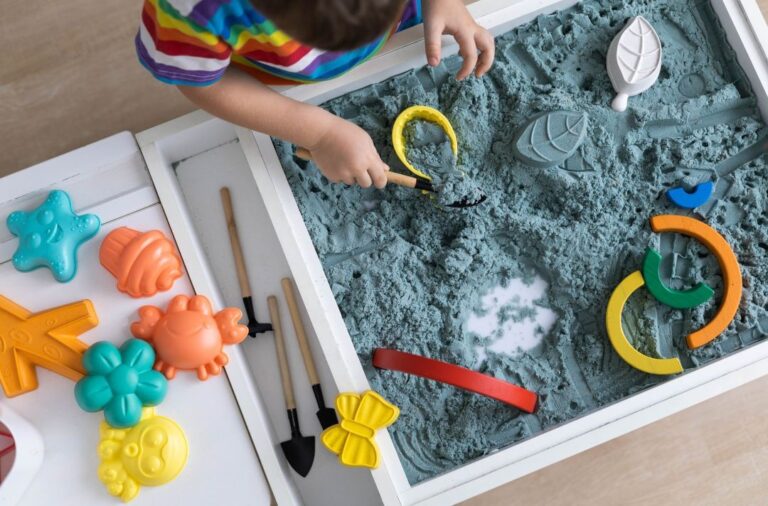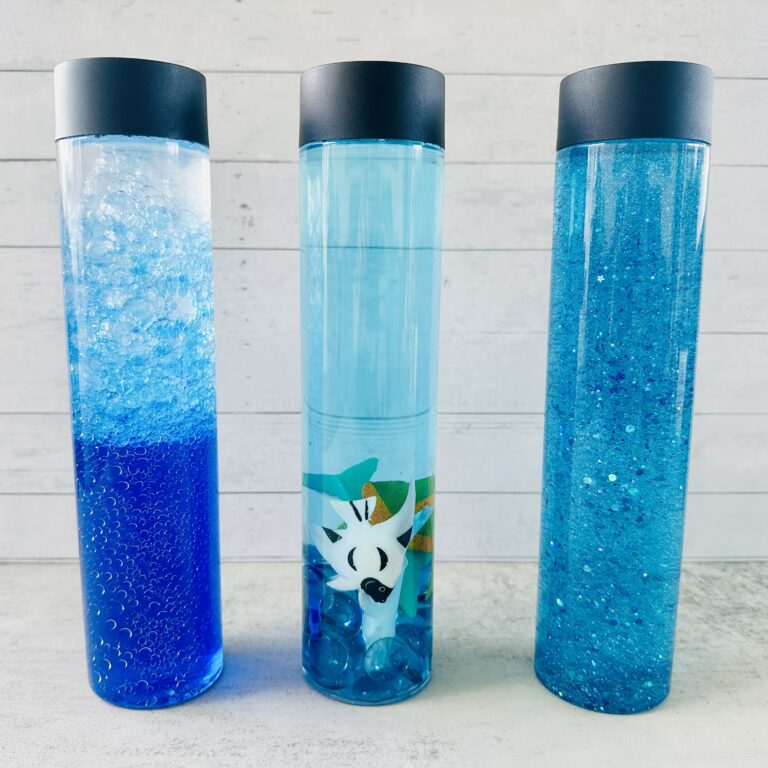How to Make Jello Blocks for Sensory Play
Jello is so fun for sensory play! These colorful, jiggly, squishy Jello blocks are taste-safe and perfect for babies, toddlers & preschoolers!
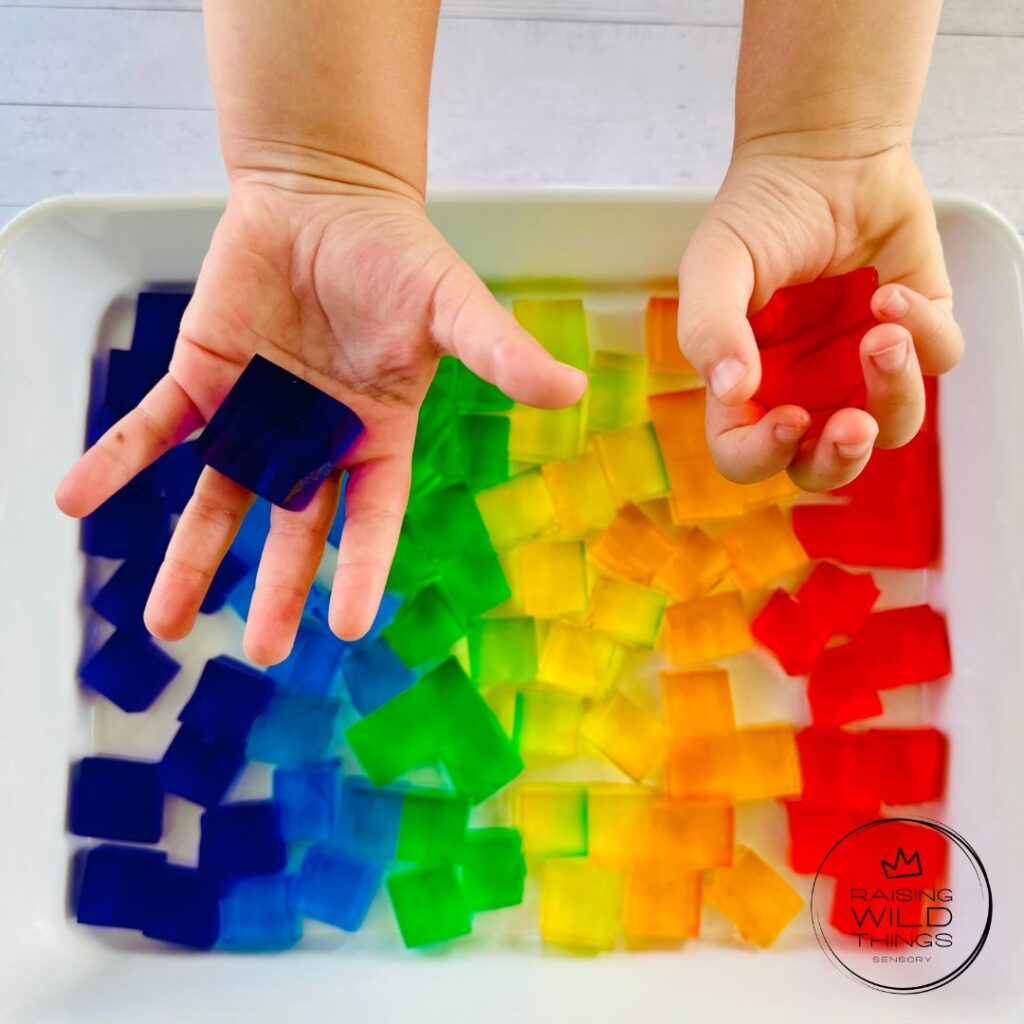
Always supervise children during sensory play. See full disclaimer here. This post may contain affiliate links, which means I may earn a small commission if you make a purchase through these links, at no extra cost to you. As an Amazon Associate, I earn from qualifying purchases. I only recommend products I personally use and love! You can read more about my disclosure policy here.
Looking for a fun, colorful sensory activity that’s totally taste-safe? Enter Jello blocks sensory play! These squishy little cubes are perfect for babies, toddlers, preschooler and older kids who love hands-on, mess-friendly play.
They’re super simple to make, vibrant, and a great way to let kids explore textures, colors, and even fine motor skills. So let’s dive in and make some Jello magic!
What Are Jello Blocks?
Imagine jiggly little cubes of color that kids can squeeze, squish, stack, or smash—without you having to worry about them tasting a bit along the way! Jello blocks are like a safer, taste-safe twist on water beads.
In this recipe, we used unflavored gelatin mixed with water and a dash of food coloring to create the rainbow effect. While Jello is sweet and tasty, gelatin is completely flavorless. These blocks are taste-safe but they don’t exactly taste yummy—so kiddos won’t be encouraged to take a bite!
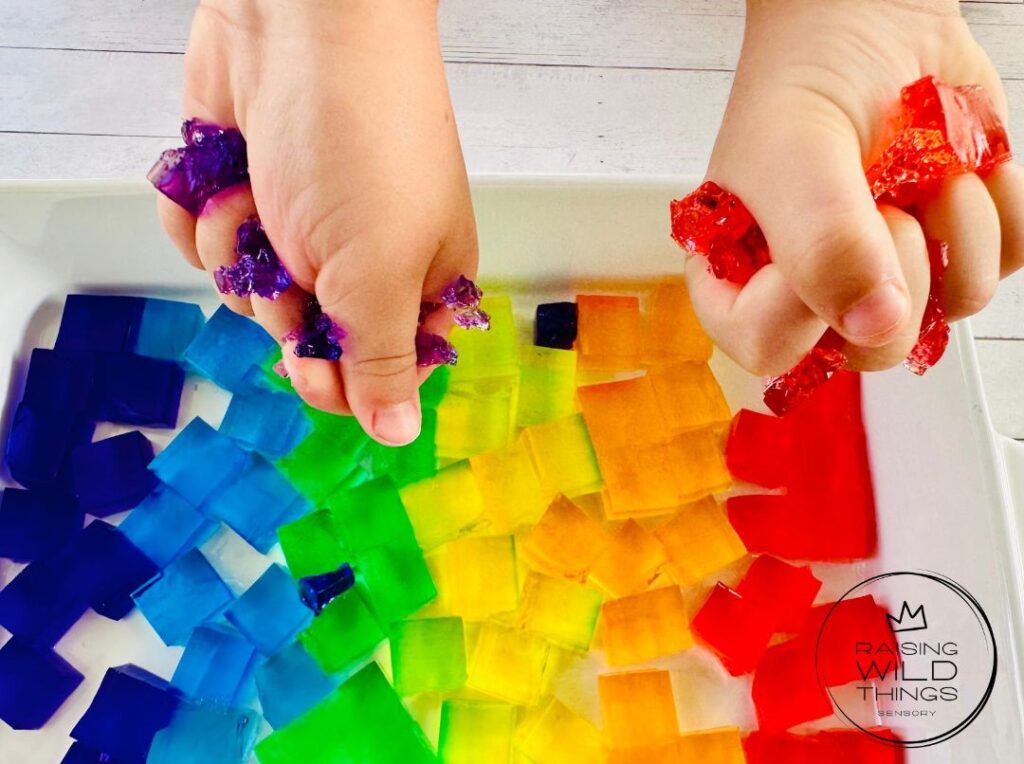
Why Jello Sensory Play Rocks
Sensory play, especially with materials like gelatin, helps kids explore textures, colors, and movements in a hands-on way. Plus, sensory play activities like squishing jello blocks are great for fine motor skills—like gripping and squeezing—and even early problem-solving. Not to mention, it’s perfect for calming busy little hands or channeling those extra bursts of toddler energy!
How to Make Jello Blocks for Sensory Play
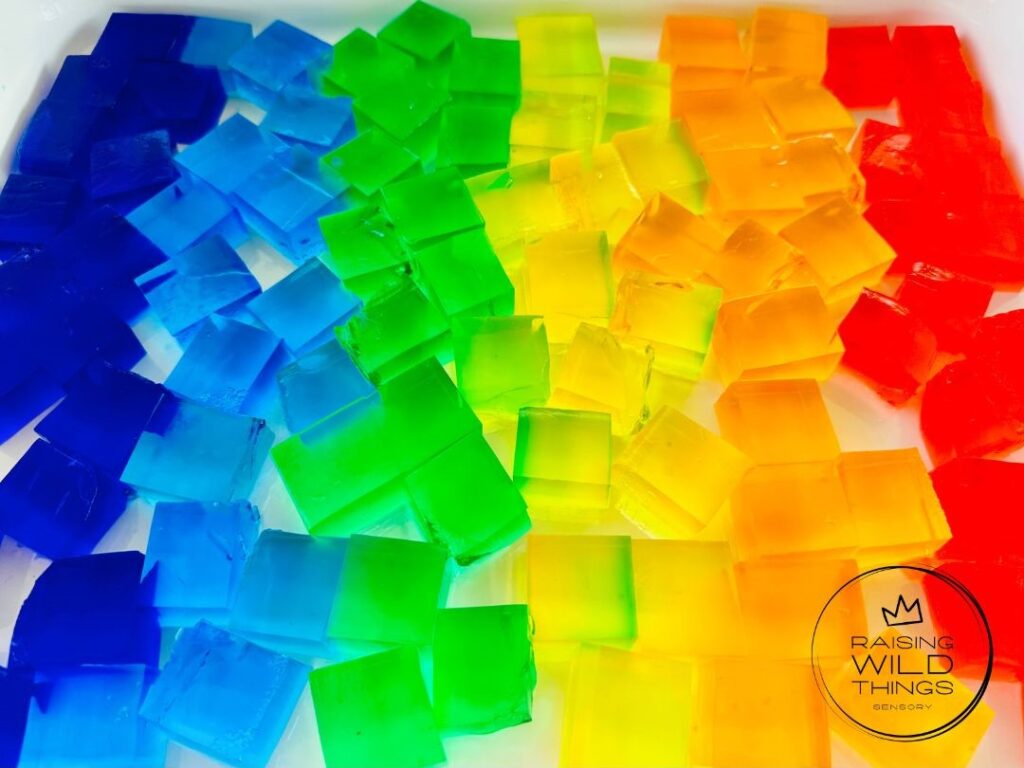
Materials You’ll Need
The ingredients and supplies are super simple. In this recipe, we used Knox unflavored gelatin packets mixed with water and a dash of food coloring to create rainbow blocks. But you could substitute the unflavored gelatin with two boxes of flavored Jell-O.
- Unflavored gelatin powder (we used 1 Knox Gelatin packet per color)
- Boiling water (3/4 cups per color)
- Cold water (1/4 cup per color)
- Food coloring (use all your favorite colors!)
- Parchment paper or wax paper (for lining)
- Containers (like a baking dish or any shallow dish)
- Silicone Cupcake Liners, Mason Jars, or Small Bowls: Perfect for scooping and pouring.
- Scoops and Funnel or Tongs and Tweezers: These will not only help keep the mess slightly under control but also encourage fine motor skills. These sensory tools are my favorite!
- Sensory Bin (or any container big enough for your child to play in).
Instructions
This process is super easy, and once you’ve made one batch, you’ll be ready to make an entire rainbow!
1. Add Gelatin to Cold Water
Pour 1/4 cup of cold water to a mixing bowl and sprinkle 1 packet gelatin over the top. Let the gelatin dissolve in the liquid.
2. Prepare Your Boiling Water
Bring 3/4 cups of water to a boil. (If you’re making multiple colors, multiply the amount of water accordingly.)
3. Add Color
Add 3-5 drops of your favorite food coloring to the hot water. The more drops, the bolder the color! Mix it up and prepare for a rainbow explosion!
4. Combine Gelatin and Hot Water
Pour the hot, colored water over the gelatin and cold water mixture. Whisk quickly to prevent any lumps. Keep stirring until everything is fully dissolved, about 1-2 minutes.
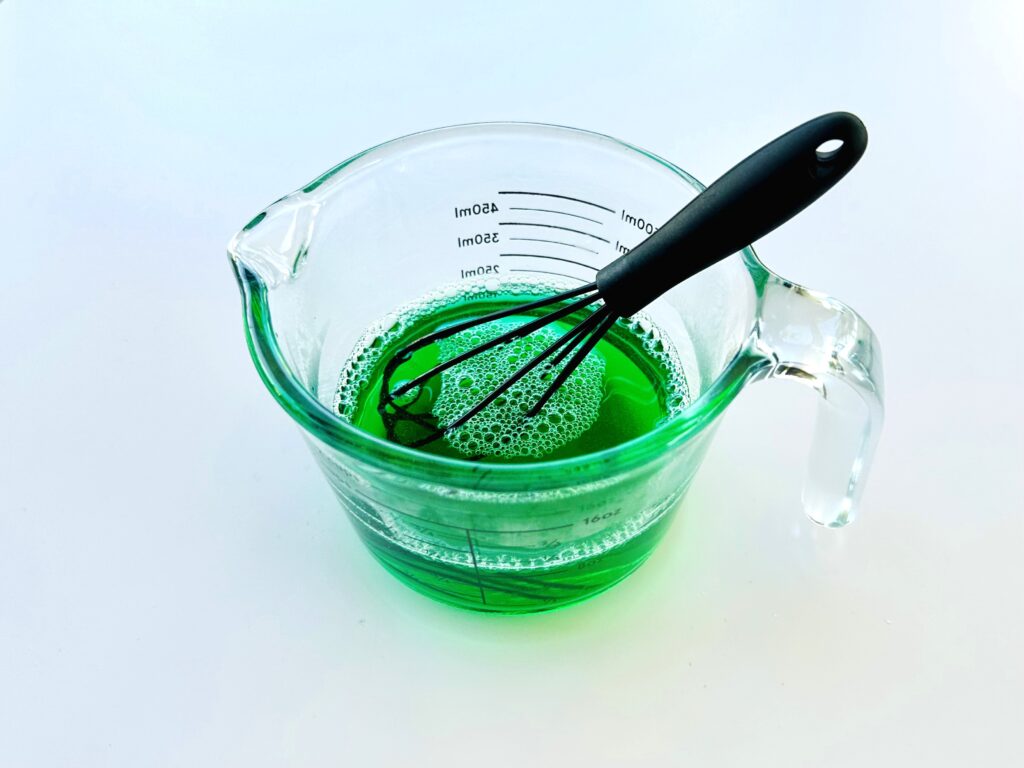
5. Line Your Dish and Pour
Grab your baking dish, line it with parchment paper, and pour the mixture in. Repeat steps 1-5 with different colors to make a variety of rainbow shades.
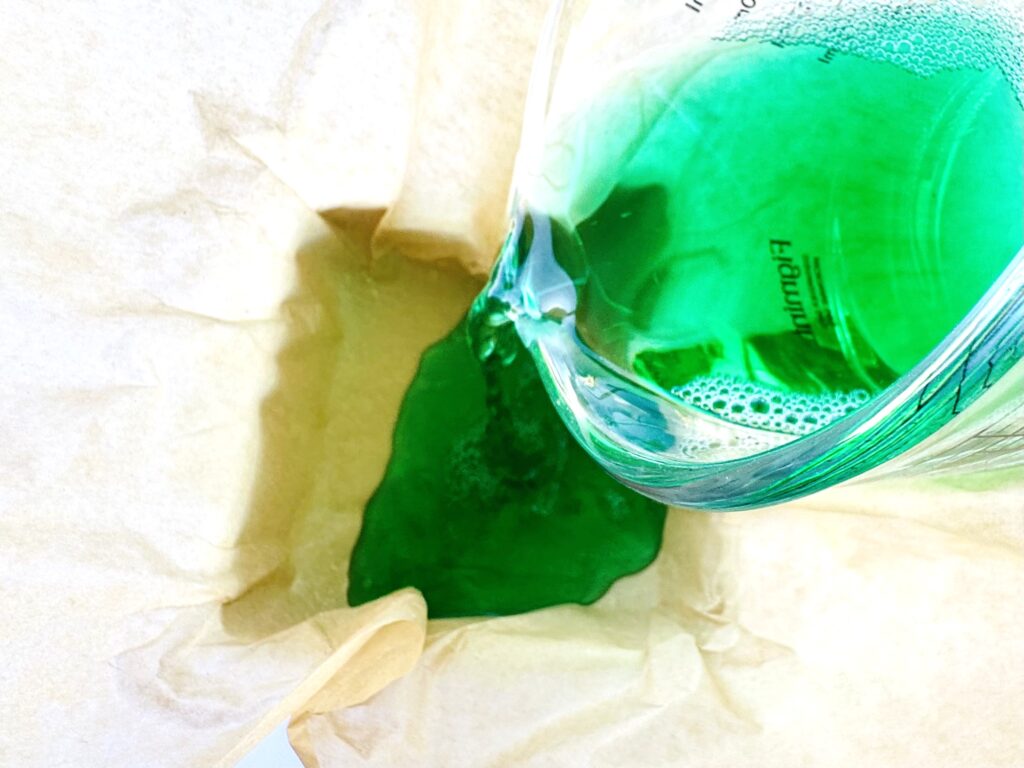
6. Refridgerate
Pop the dish in the fridge for 3-4 hours, or until the gelatin is fully set.
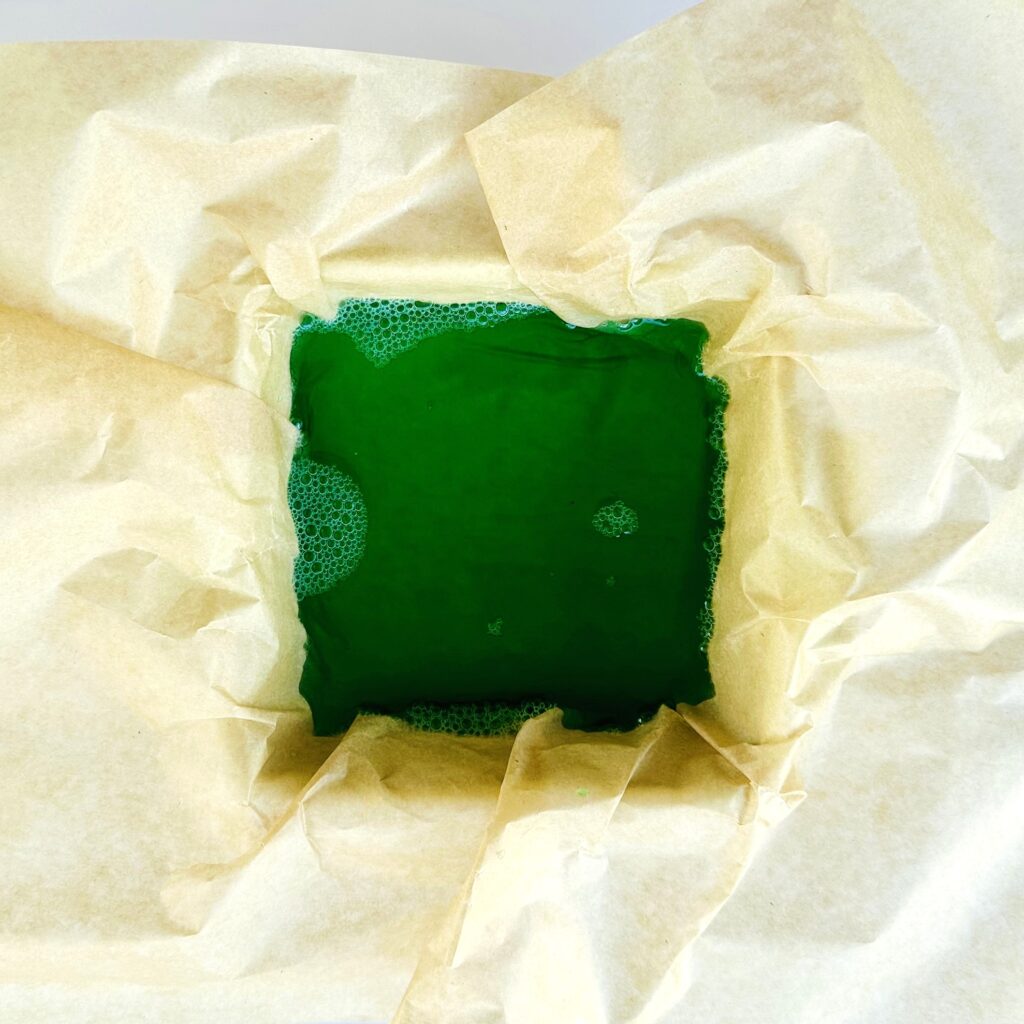
7. Cut into Blocks
Carefully lift the parchment paper out of the dish, and remove the parchment paper from the gelatin block. Use a knife to cut the gelatin into small, squishy blocks.
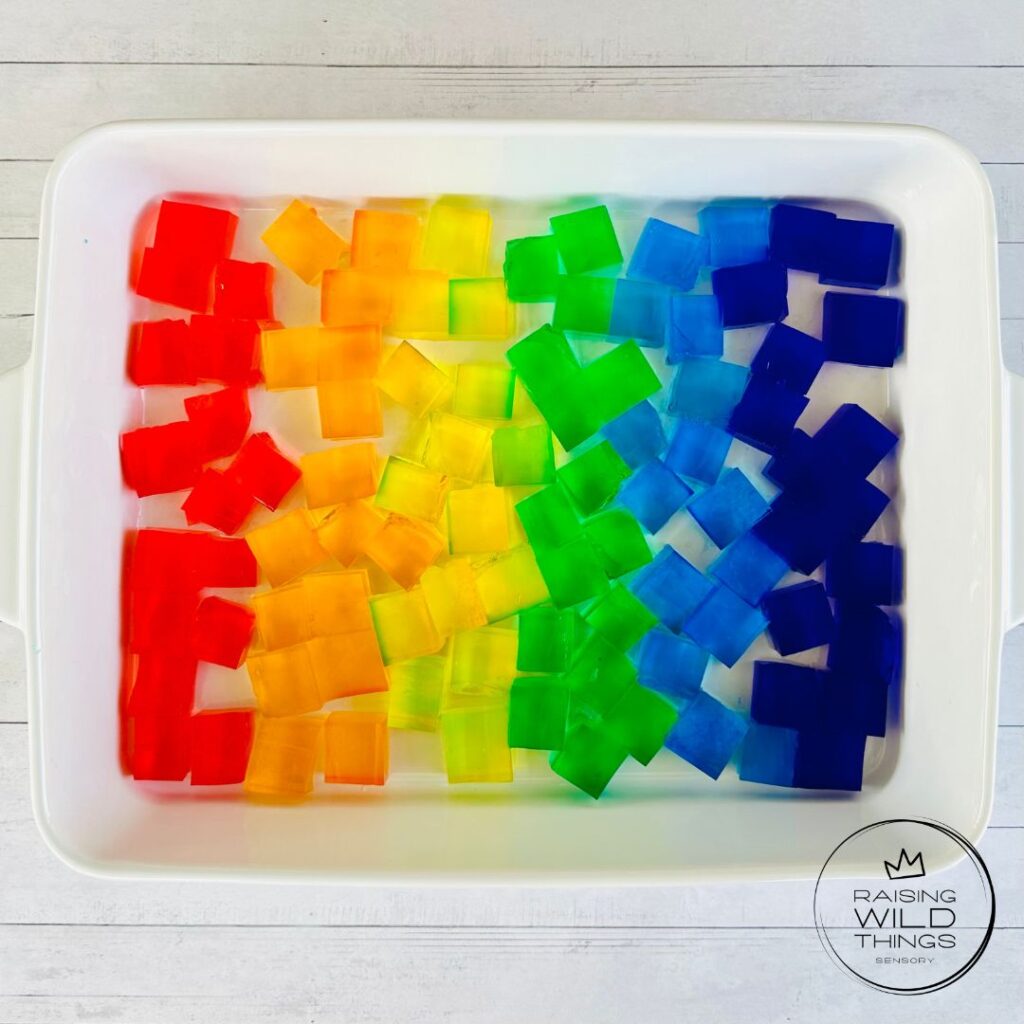
8. Time to Play!
Place a few blocks in a sensory bin, and let your little ones dive in! Tools like scoops, tongs, or even safety scissors for cutting the Jello make the sensory play experience even better, especially for little ones who don’t like getting messy hands.
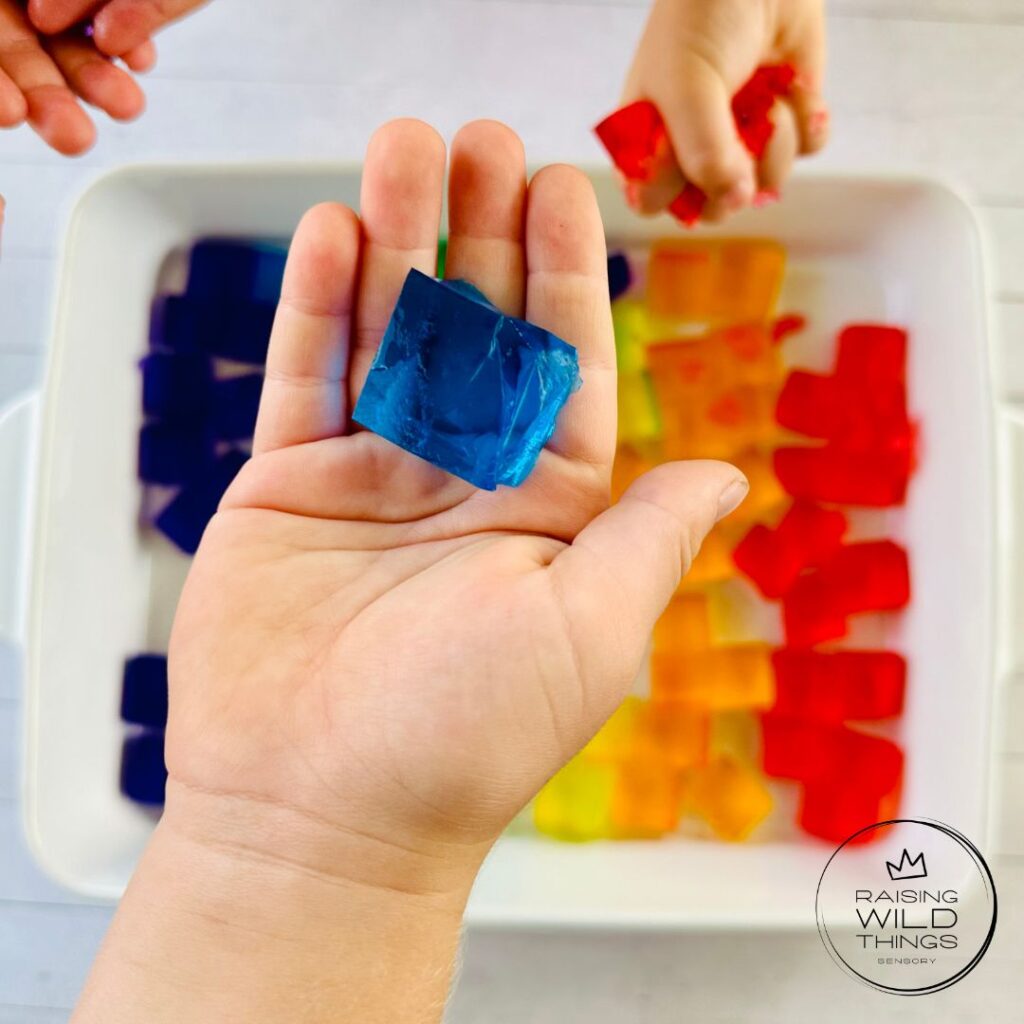
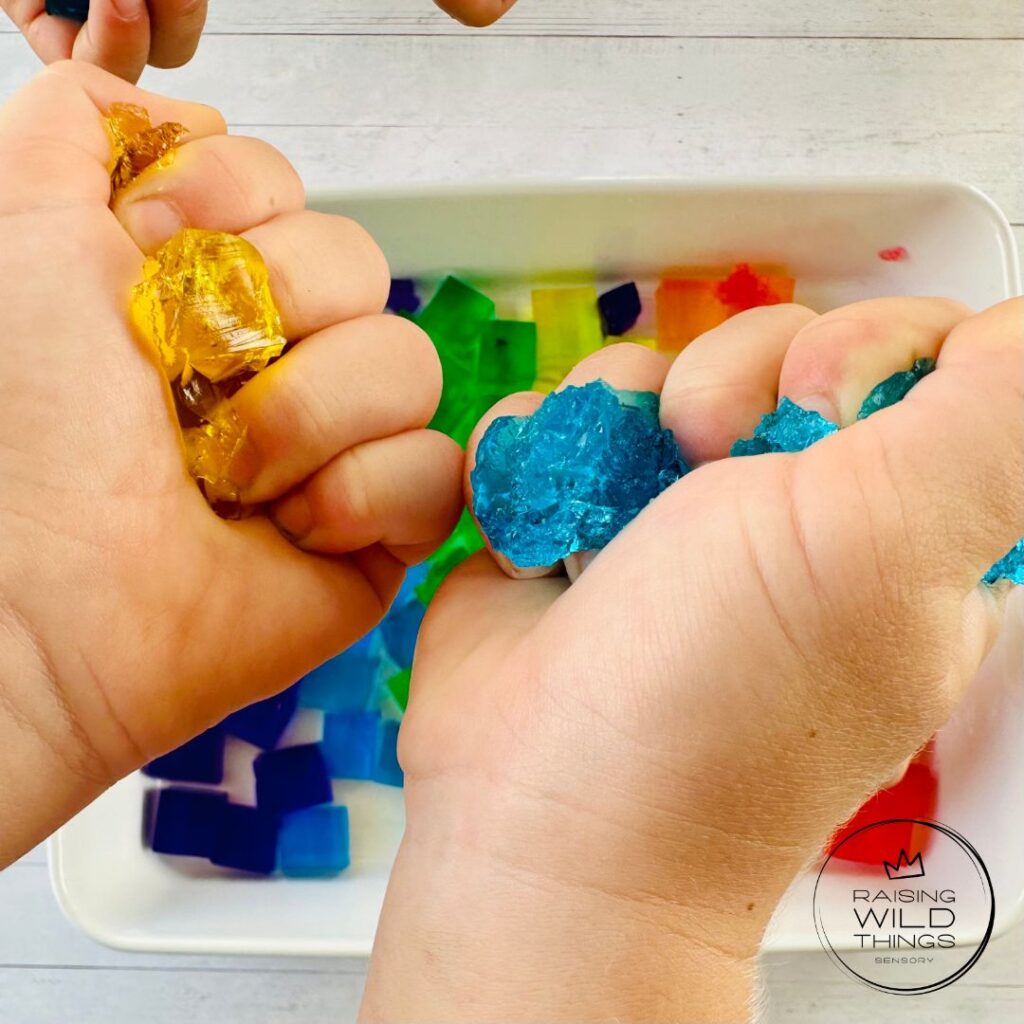
This activity is great for babies, toddler and preschoolers, but big brother couldn’t resist joining in the fun!
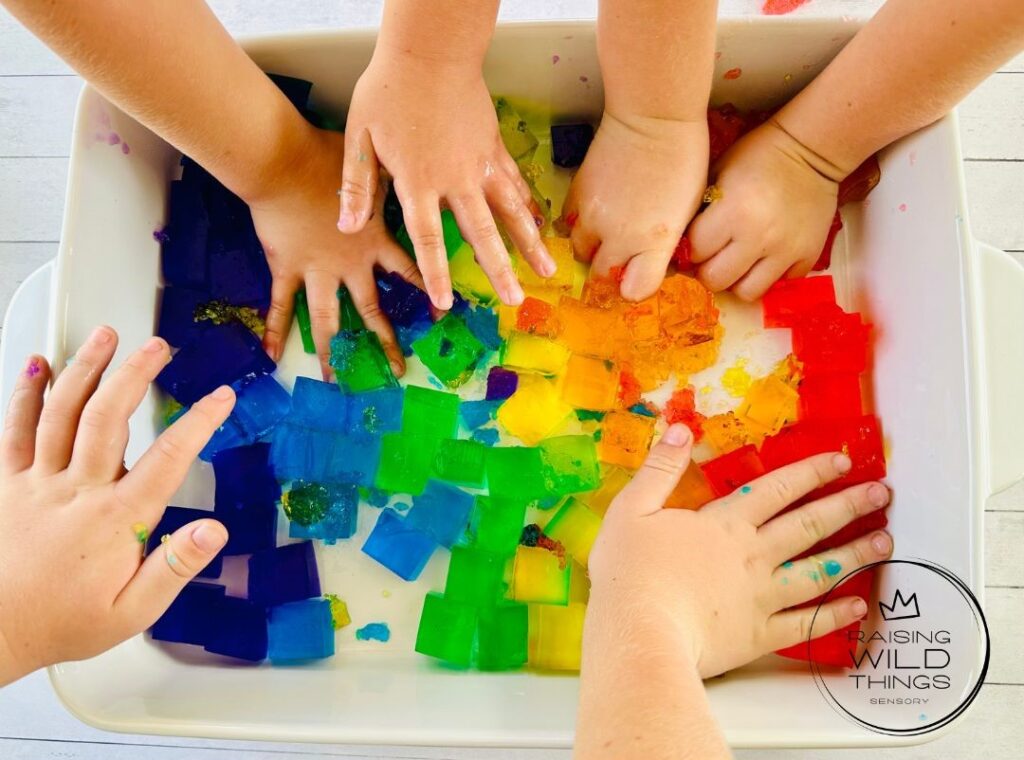
I usually give my little ones scoops, tongs, and safety scissors to play with the Jello, but this time, squishing and smashing the Jello was the sensory play of choice – and they had a blast!
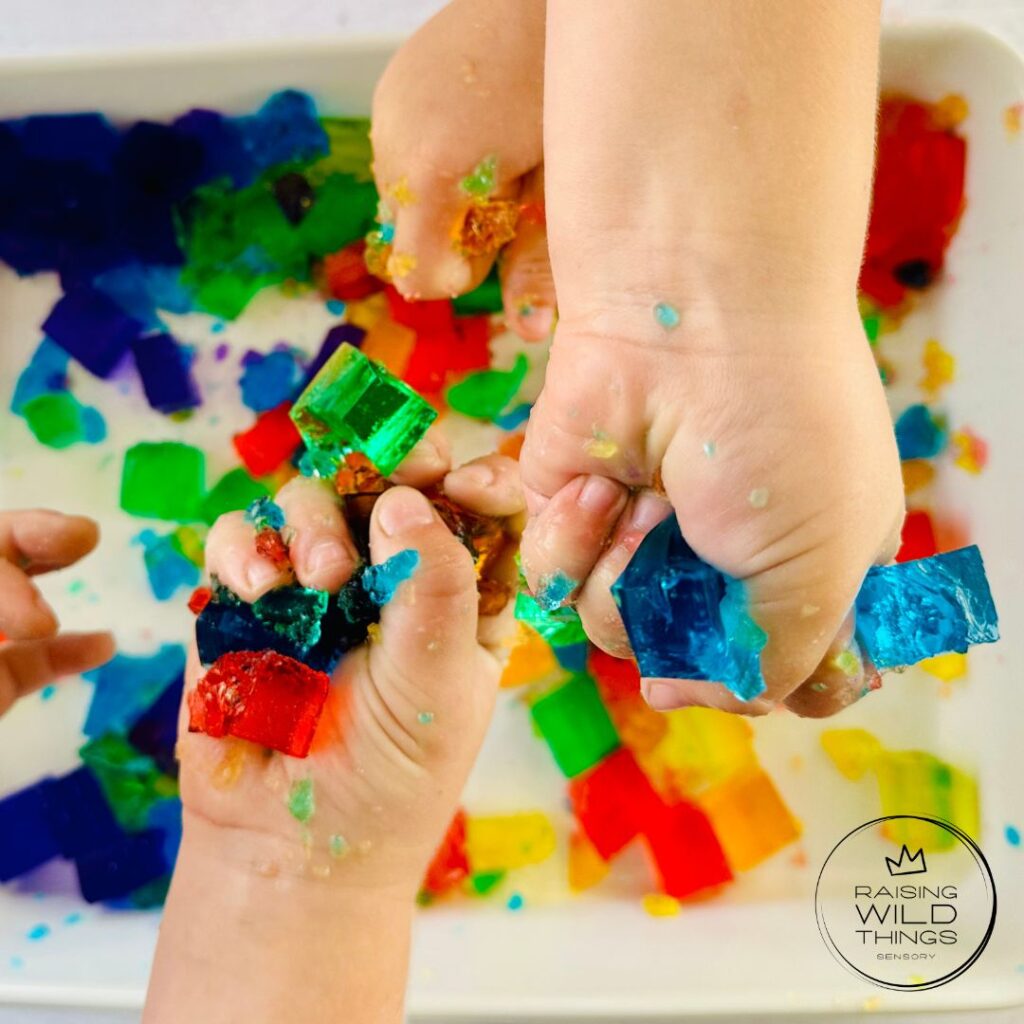
Fun Add-Ons and Variations
Here’s where you can get creative! Try these ideas to keep things fresh:
- Clear Gelatin Blocks: Skip the food coloring if you want a minimalist, see-through look.
- Rainbow Cubes: Make each batch a different color and arrange them in rainbow order for a truly vibrant sensory bin.
- Edible Jell-O Cubes: If you want these blocks to taste great too, substitute the unflavored gelatin with two boxes of flavored Jell-O.
- Scented Cubes: Add a packet of unsweetened Kool-Aid powder for a fruity, smell-safe option that will excite kids’ senses even more!
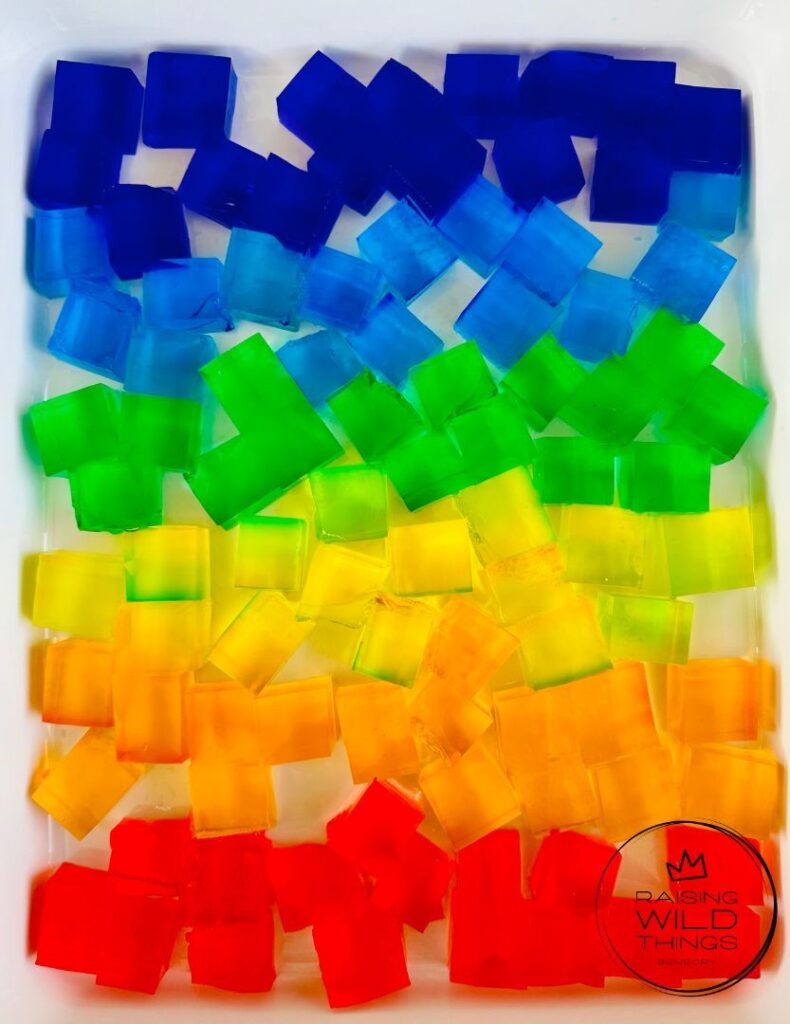
Safety Tips for Jello Sensory Play
A quick note: While these blocks are taste-safe, they’re not actually edible. The firm texture and squishiness make them a possible choking hazard, so keep a close eye on little ones.
For babies and toddlers, you can soften the cubes by using less gelatin or more water in the mix. Always supervise closely, especially with younger children!
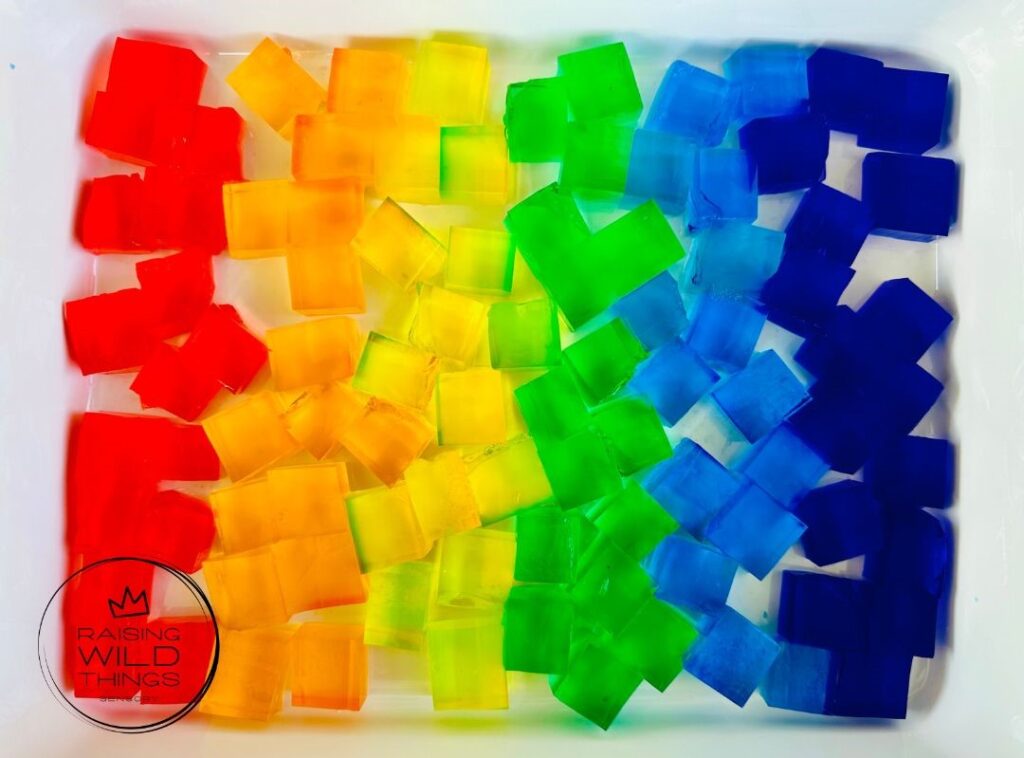
Benefits of Jello Sensory Play
Jello sensory play isn’t just a fun activity – it’s also packed with developmental benefits for little ones! Here’s how this squishy, colorful sensory experience can support your child’s growth:
1. Boosts Fine Motor Skills
Handling and manipulating jello blocks helps strengthen those tiny hand muscles. When kids pinch, poke, or squeeze the jello, they’re practicing the same skills that support writing, buttoning, and other essential tasks.
2. Encourages Sensory Exploration
Jello offers a unique combination of textures: it’s soft, squishy, and a little wobbly, making it exciting for kids to touch, squish, and even taste! This type of sensory input is great for children learning to process different textures, especially those with sensory sensitivities.
3. Promotes Language Development
Sensory play is the perfect opportunity to build vocabulary. You can introduce descriptive words like “squishy,” “wobbly,” “jiggly,” or “sticky,” and ask your child how the jello feels, looks, or smells. This back-and-forth dialogue naturally builds communication and language skills.
4. Supports Independent Play and Focus
Jello sensory play can be a captivating experience, encouraging children to explore independently. As they become absorbed in the textures, colors, and shapes, they’re working on focus and independent play, which are key for their developing attention spans.
5. Fosters Creative Exploration
There are no rules with Jello sensory play, which makes it a great outlet for creativity! Kids can build, squish, sort by color, or mix the blocks into a sensory “soup” of their own making. This open-ended play is essential for letting children experiment and learn at their own pace.
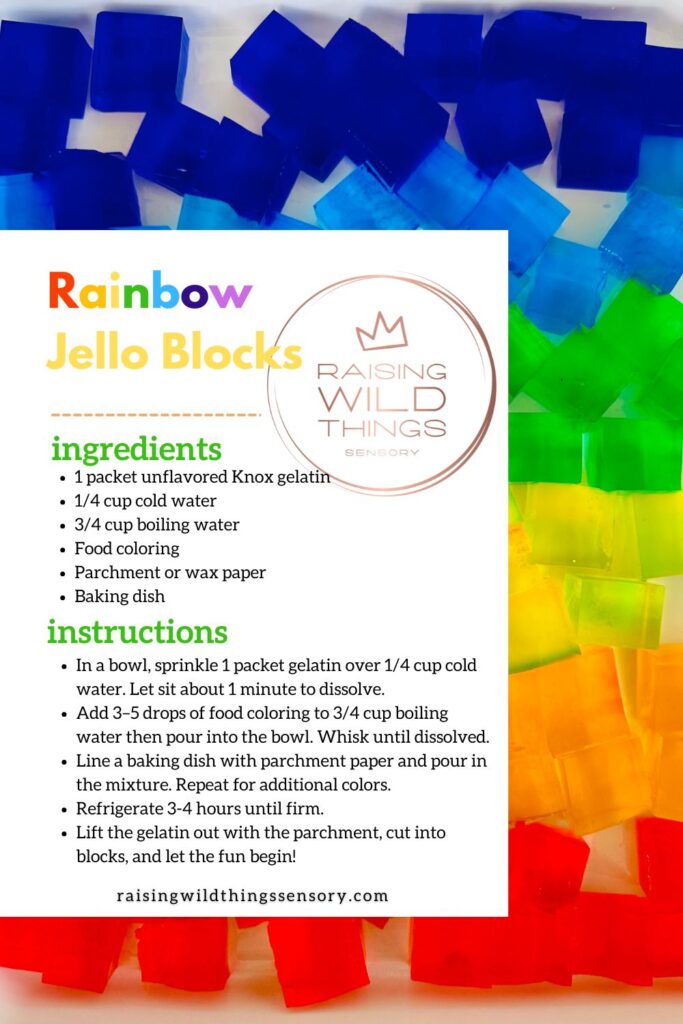
Final Thoughts
With these Jello sensory play blocks, you’ll have a fun, mess-friendly, and sensory-rich activity that’s sure to keep kids entertained. Whether it’s the texture, the colors, or the pure joy of squishing, these blocks are a big hit. Now go ahead, give it a try, and watch the magic unfold!
Recommended
- 18 Recipes: The Best DIY Sensory Bin Fillers
- How to Dye Chickpeas for Sensory Play
- How To Dye Rice To Make Rainbow Rice
- How To Dye Pasta Noodles For Sensory Play
- How to Make Taste-Safe Chia Seed Sensory “Slime”
- How To Make Edible “Mud” Playdough For Sensory Play
- How To Make Edible Dirt For Sensory Play
- How To Make The Best Taste-Safe Kinetic Sand
- How To Make Taste-Safe Moon Dough For Sensory Play
- How to Make The BEST 2 Ingredient Edible Play Dough
- Guide To Sensory Bin Supplies You Need To Have
